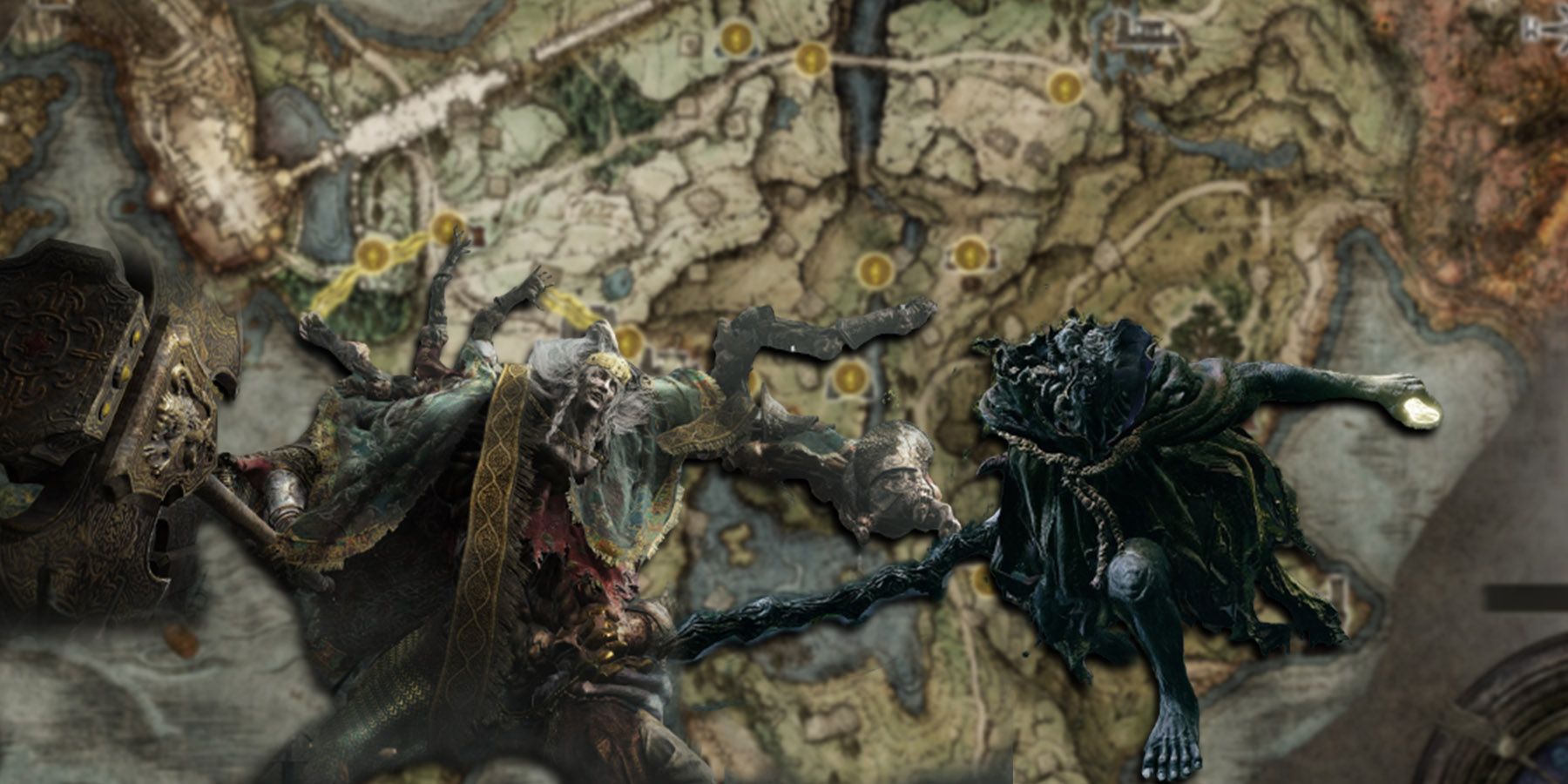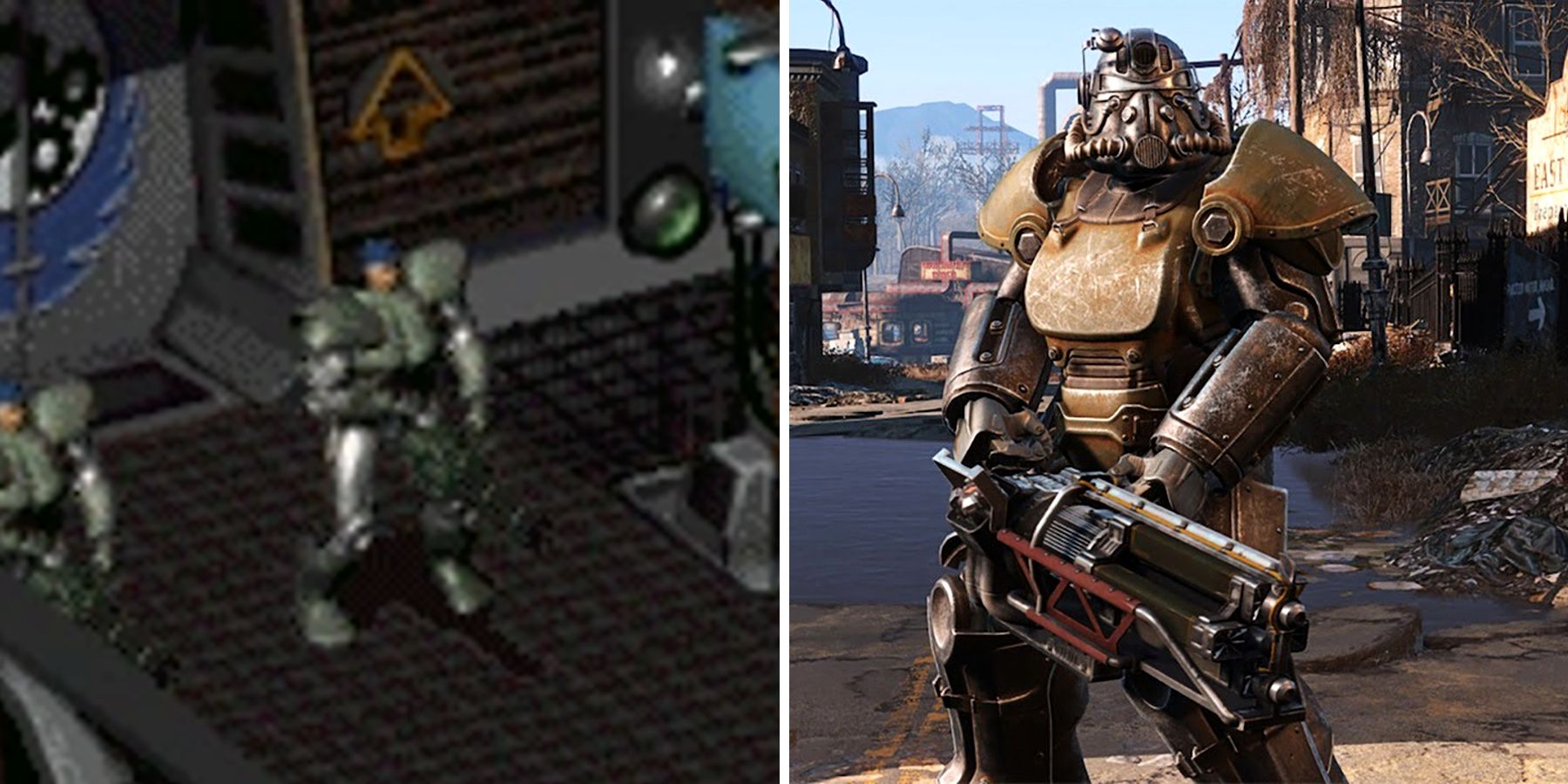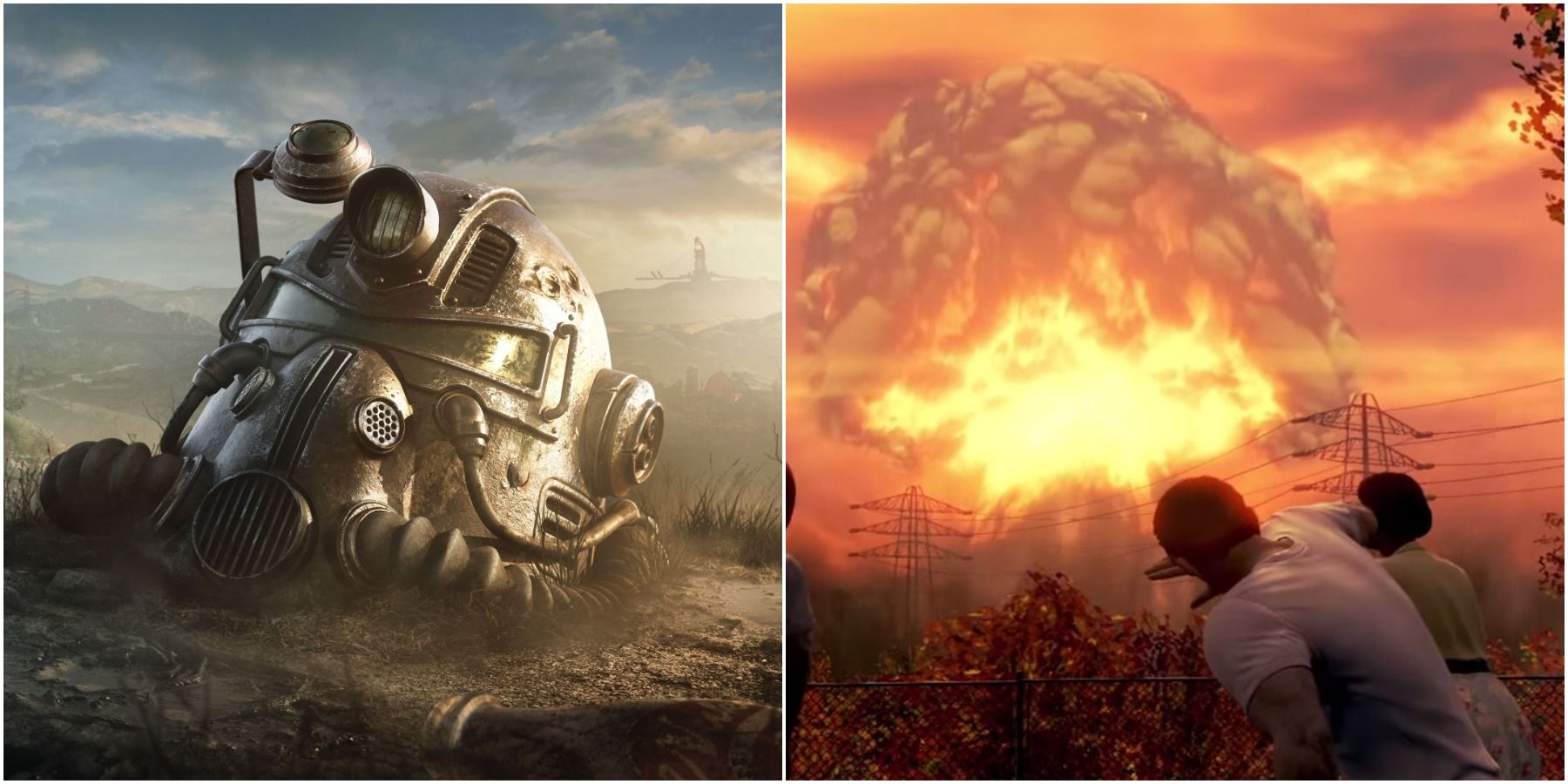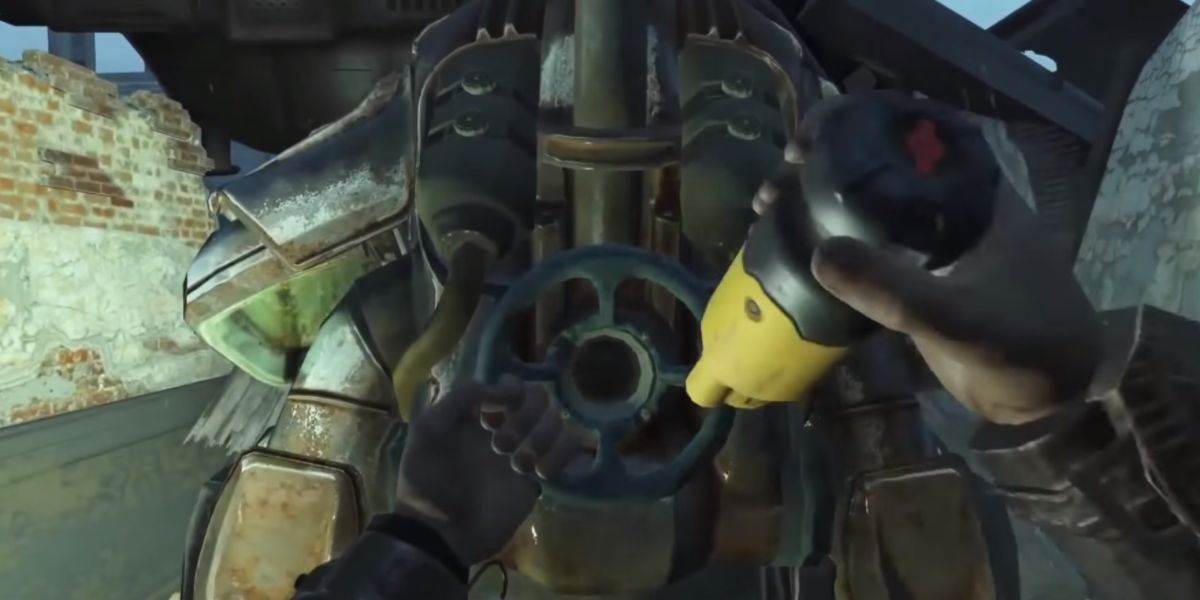Power Armor is a staple in the longstanding Fallout series. Known for its easily recognizable look and extreme usefulness in gameplay, Power Armor is a sought-after item in any entry of the franchise. This comes as no surprise, considering its value both pre- and post-war.
Thus, Power Armor has become an icon to signify all things Fallout. It’s gone through plenty of changes throughout the series, with many new models and mechanics added to each new game. However, it still retains its classic look and utility.
The Brief History of Power Armor in the Fallout Universe
Power Armor in the Fallout universe was first manufactured in the United States before the Great War. These suits were meant to protect their wearer while still allowing for mobility and the ability to use heavy artillery with relative ease. In 2067, the West Tek corporation released the first set of Power Armor, T-45. The company would then go on to manufacture T-51 in 2076 and T-60 in 2077. However, production came to an abrupt halt when the bombs dropped.
Other, lesser-known models were available though, such as T-65 Power Armor, which was only provided to the US Secret Service. There were also prototypes of unfinished X-01 models — the schematics of which Fallout’s Enclave got its hands on. This model was meant to be the first entry to the next generation of advanced Power Armor.
Post-war, not many Fallout organizations had the resources to craft their own Power Armor, so production was at a near standstill. The Enclave, however, managed to create its own models, namely the Advanced Power Armor Mark I and II. Meanwhile, raiders and other wastelanders began salvaging old power armor parts to create shoddy recreations.
A Staple in the Fallout Franchise
Since Power Armor has been around since before Fallout’s Great War, the player can find models in every game in the franchise. It’s interesting to see how much the concept has evolved since the first title as well, thanks to the sheer number of new variants that have been added to the franchise.
For instance, the Vault Dweller of Fallout can acquire a set of T-51b Power Armor through a number of means. Fans should note that it’s generally labeled as “Powered Armor” in the game. They can then have the suit hardened, boosting its defensive capabilities, and renaming the item to “Hardened Powered Armor.” Fallout 2 adds to this as aside from potentially acquiring Powered Armor, the Chosen One can also find sets of Advanced Power Armor Mark I or II — the Enclave’s post-war variants of Power Armor.
Even more models were added to Fallout 3 and New Vegas. These games began the trend of including unique sets of Power Armor in Fallout. For instance, while players can equip generic T-45d Power Armor, there are also specialized versions of the same model. The player can find Tribal Power Armor in Fallout 3 as well as Scorched Sierra Power Armor in Fallout: New Vegas — both of which are modified variants of the original T-45d set. Other models have even more unique variants.
Finally, Fallout 4 and Fallout 76 introduced even more models to the series. Fallout 4 added T-60 Power Armor as well as the rare X-01 Power Armor, which was created post-war. Meanwhile, Fallout 76 added much more, from new generic models, like T-65, to old ones that have been heavily modified, such as the Ultracite Power Armor Set and the Excavator Suit.
Changes in Fallout Power Armor’s Gameplay Mechanics
If anything, this proves that power armor isn’t going away anytime soon in the Fallout franchise. Aesthetic and utility aside, it’s become an integral aspect of the series. One could say it’s part of what makes a game a Fallout title. However, even with its iconic nature, the mechanics surrounding power armor have had their fair share of criticism, particularly with its iteration in Fallout 4.
From Fallout to Fallout: New Vegas, Power Armor was treated as a late-game acquisition. A player could only acquire it if they bested a powerful enemy or explored the game world thoroughly. In short, finding it wasn’t supposed to be easy. Fallout 3 and New Vegas even locked the use of Power Armor behind a specific Fallout perk — Power Armor Training. Unless the player learned this perk from an NPC, they wouldn’t be able to use Power Armor in the playthrough.
Fallout 4 made a huge change to this tradition which was then carried over to Fallout 76. It provided the player with a set of T-45 Power Armor right at the beginning of the game, during the Fallout quest “When Freedom Calls.” It also increased the number of suits that could be found in the wasteland, inevitably making Power Armor feel less like an ultra-powerful tool and more like just another generic piece of armor — or, even worse, a mere collectible.
There’s also the entire debate surrounding Fallout 4’s fusion cores and general Power Armor maintenance. Many long-time fans argue that the introduction of fusion cores is a retcon. This is because the descriptions for Powered Armor in Fallout and Fallout 2 distinctly say that the suit is powered by a micro-fusion reactor that can fuel it for about a century. Others argue this point by saying that the two forms of energy are not mutually exclusive. Whatever the case, the nature of fusion cores isn’t explored extensively in Fallout 4, so it’s hard to say which side is correct.
All this goes to show that while Power Armor is no doubt a staple in Fallout, its mechanics aren’t set in stone just yet. Thus, players can expect it to keep cropping up in future Fallout games, but its gameplay specifics will be subject to change until Bethesda finds a formula that sticks. The formula could be the most recent introduction to Fallout 4, or it could be something else entirely. One thing’s for sure, though: Power Armor isn’t going away.
Fallout 4 is available now for PC, PS4, and Xbox One.







